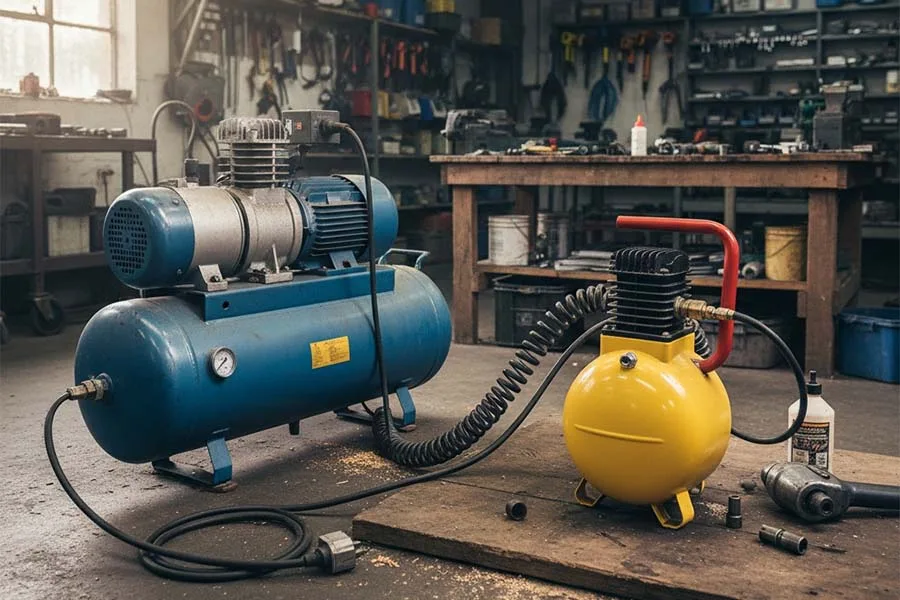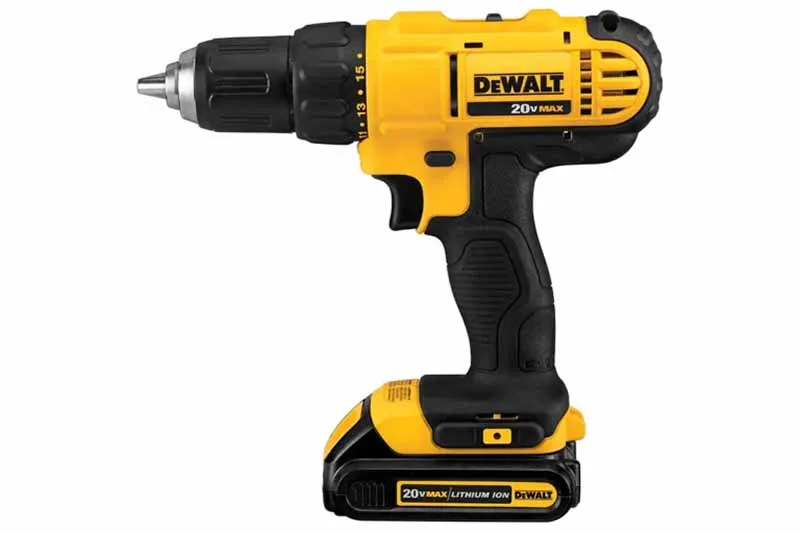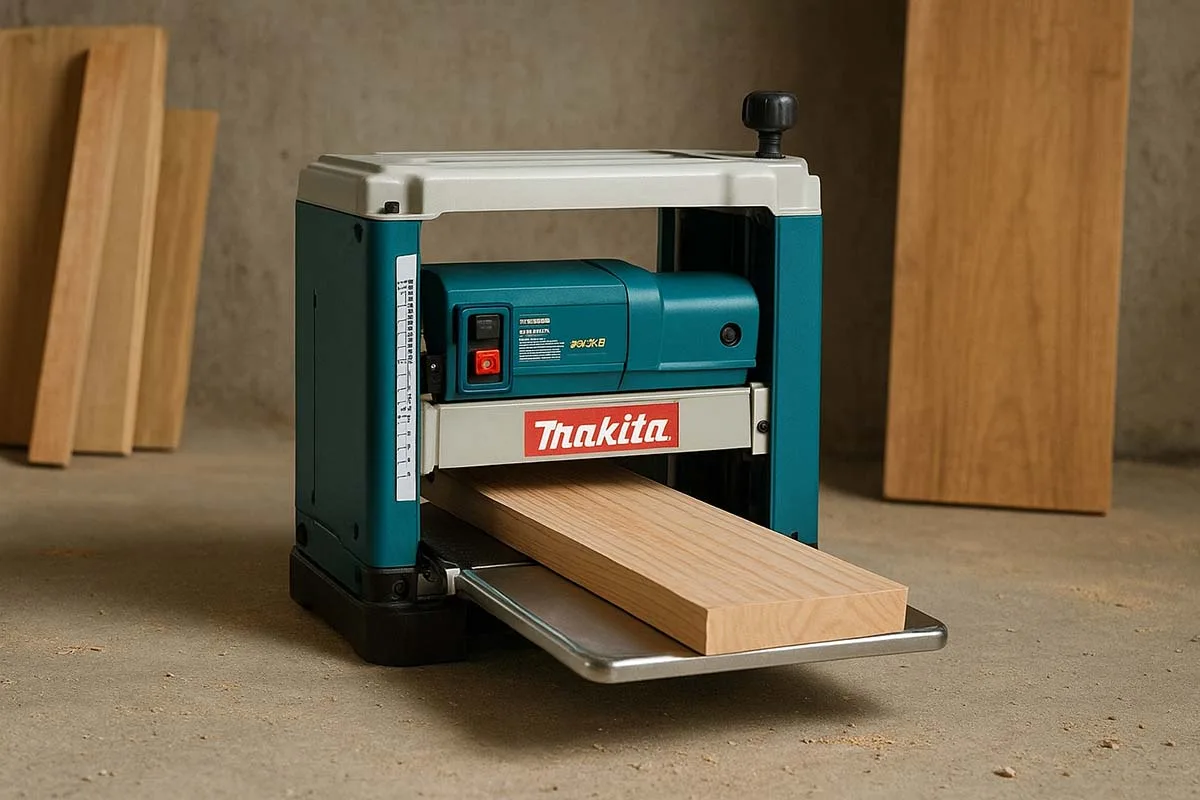Introduction: Why Choosing the Right Compressor Matters
Whether you’re powering pneumatic tools in a workshop or inflating tires on the go, your compressor choice directly affects performance, efficiency, and long-term value. Portable and stationary compressors serve different needs—and picking the wrong type can lead to wasted money, downtime, and frustration.
This guide breaks down the key differences, buying factors, and common pitfalls so you can make a confident, informed decision.
Key Factors to Consider Before Buying
Before choosing between portable and stationary compressors, ask yourself:
- Usage Frequency: Daily use or occasional tasks?
- Mobility Needs: Will you move it between job sites or keep it in one location?
- Power Source: Do you have access to 230V or only 120V outlets?
- Tank Size: Larger tanks support longer tool use without cycling.
- Noise Level: Quiet operation matters in enclosed or residential areas.
- Budget: Portable units are often cheaper upfront, but may cost more long-term.
- Tool Compatibility: Match compressor output (CFM/PSI) to your tools’ requirements.
Features and Specifications Buyers Should Understand
| Feature | Portable Compressor | Stationary Compressor |
|---|---|---|
| Tank Size | 1–6 gallons | 20–80+ gallons |
| CFM Output | 2–5 CFM | 10–30+ CFM |
| PSI Range | 90–120 PSI | 90–175 PSI |
| Power Source | 120V, battery, gas | 230V, 3-phase |
| Mobility | Lightweight, wheeled | Fixed, heavy-duty |
| Noise Level | Moderate to loud | Often quieter (belt-driven) |
| Maintenance | Lower | Higher but more durable |
CFM (Cubic Feet per Minute) and PSI (Pounds per Square Inch) are critical. Always match these to your most demanding tool. Undersized compressors lead to tool stalling and overheating.
Common Mistakes to Avoid
- Buying based on price alone: Cheap units often lack power and durability.
- Ignoring CFM requirements: Your tools may need more airflow than the unit provides.
- Overestimating portability: “Portable” doesn’t always mean lightweight or easy to carry.
- Skipping duty cycle checks: Some compressors aren’t built for continuous use.
- Neglecting noise levels: Loud units can disrupt work environments or violate noise regulations.
Recommended Top Picks
Here’s a balanced selection of compressors across both categories:
🔹 Portable Compressors
- Makita MAC2400 – Quiet, oil-lubricated, great for framing and roofing.
- DeWalt D55168 – High PSI, compact design, ideal for garage use.
- California Air Tools 8010 – Ultra-quiet, perfect for indoor tasks.
🔹 Stationary Compressors
- Ingersoll Rand SS5 – 60-gallon tank, reliable for workshops.
- Campbell Hausfeld XC602100 – Vertical design saves space, high CFM.
- Quincy QT-54 – Industrial-grade, long life, great for continuous use.
These picks span different budgets and use cases. Always verify specs against your tool requirements before buying.
Portable vs Stationary Compressor FAQ
Interesting Fact
Compressed air is often called the “fourth utility” in industrial settings—after electricity, water, and gas—because of its critical role in powering tools and systems.
Lesser-Known Fact
Many portable compressors have a 50% duty cycle, meaning they can only run half the time without overheating. Stationary models often support 100% duty cycles for continuous operation.
Further Read
- How to Improve Energy Efficiency of Your Compressor
- How to Troubleshoot Common Compressor Problems
- Sullair Compressor Maintenance Guide – LS Series, 185 Portable, OFS Oil-Free
- Quincy Compressor Maintenance Guide: Keep Your QGS and QR-25 Running at Peak Performance
- Atlas Copco Compressor Maintenance Guide – Service Tips & Schedule
- Kaeser Compressor Maintenance Guide – Service Schedule & Expert Tips
- Industrial Air Compressor Buying Guide
Conclusion: Choose with Confidence
Choosing between a portable and stationary compressor isn’t just about specs—it’s about matching your workflow, environment, and long-term needs. With the right choice, you’ll boost productivity, reduce maintenance, and get more value from every tool.
Have experience with both types? Share your tips or favorite models in the comments below. If this guide helped, pass it on—your fellow technicians and DIYers will thank you.
Like, comment, and share this article to support the Industrial Tools learning hub.





